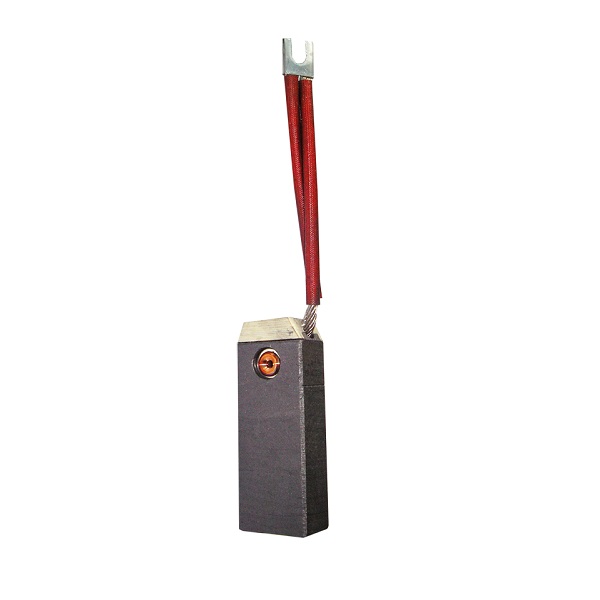
The turbine generator carbon brush 25.4*38.1*102mm and collector ring are the largest sliding contact conductive part of the generator, as well as the main equipment for dynamic and static contact and energy exchange. They are also important components of the generator excitation system. Under normal operating conditions, the carbon brush 25.4*38.1*102mm should have good contact with the collector ring. The operating status of each carbon brush should be close, and the current passing through the carbon brush should be basically at the same level without significant deviation. In addition, the temperature field of the carbon brush should be evenly distributed.
Technical parameters
| Resistivity | 18 Ω m |
| Bending strength | 5.2 MPa |
| Shore hardness | 20 |
| Volume density | 1.28 g/c.c |
| Contact voltage drop | 2.50 V |
| Friction coefficient | 0.29 |
| Rated current density | 10 A/cm2 |
| Allowable circumferential speed | 81m/s |
Maintenance
Regularly check the wear of the turbine generator carbon brush 25.4*38.1*102mm. If the wear exceeds 2/3 or reaches the minimum effective mark of the carbon brush, replace the carbon brush in a timely manner. Before replacing the carbon brush, grind the contact surface to ensure that it is smooth and the ovality matches the outer diameter of the collector ring, and ensure that the carbon brush can move freely up and down within the brush holder. The gap between the lower edge of the control brush holder and the working surface of the collector ring is 3-4mm. If the gap is too small, it will cause increased wear of the carbon brush. If the gap is too large, it may cause the carbon brush to jump or lack flesh, which is easy to generate electric sparks. Detailed records should be kept of the replaced carbon brushes, and the quantity of each replacement should not exceed 10% of the total.
- English
- French
- German
- Portuguese
- Spanish
- Russian
- Japanese
- Korean
- Arabic
- Irish
- Greek
- Turkish
- Italian
- Danish
- Romanian
- Indonesian
- Czech
- Afrikaans
- Swedish
- Polish
- Basque
- Catalan
- Esperanto
- Hindi
- Lao
- Albanian
- Amharic
- Armenian
- Azerbaijani
- Belarusian
- Bengali
- Bosnian
- Bulgarian
- Cebuano
- Chichewa
- Corsican
- Croatian
- Dutch
- Estonian
- Filipino
- Finnish
- Frisian
- Galician
- Georgian
- Gujarati
- Haitian
- Hausa
- Hawaiian
- Hebrew
- Hmong
- Hungarian
- Icelandic
- Igbo
- Javanese
- Kannada
- Kazakh
- Khmer
- Kurdish
- Kyrgyz
- Latin
- Latvian
- Lithuanian
- Luxembou..
- Macedonian
- Malagasy
- Malay
- Malayalam
- Maltese
- Maori
- Marathi
- Mongolian
- Burmese
- Nepali
- Norwegian
- Pashto
- Persian
- Punjabi
- Serbian
- Sesotho
- Sinhala
- Slovak
- Slovenian
- Somali
- Samoan
- Scots Gaelic
- Shona
- Sindhi
- Sundanese
- Swahili
- Tajik
- Tamil
- Telugu
- Thai
- Ukrainian
- Urdu
- Uzbek
- Vietnamese
- Welsh
- Xhosa
- Yiddish
- Yoruba
- Zulu
- Kinyarwanda
- Tatar
- Oriya
- Turkmen
- Uyghur









